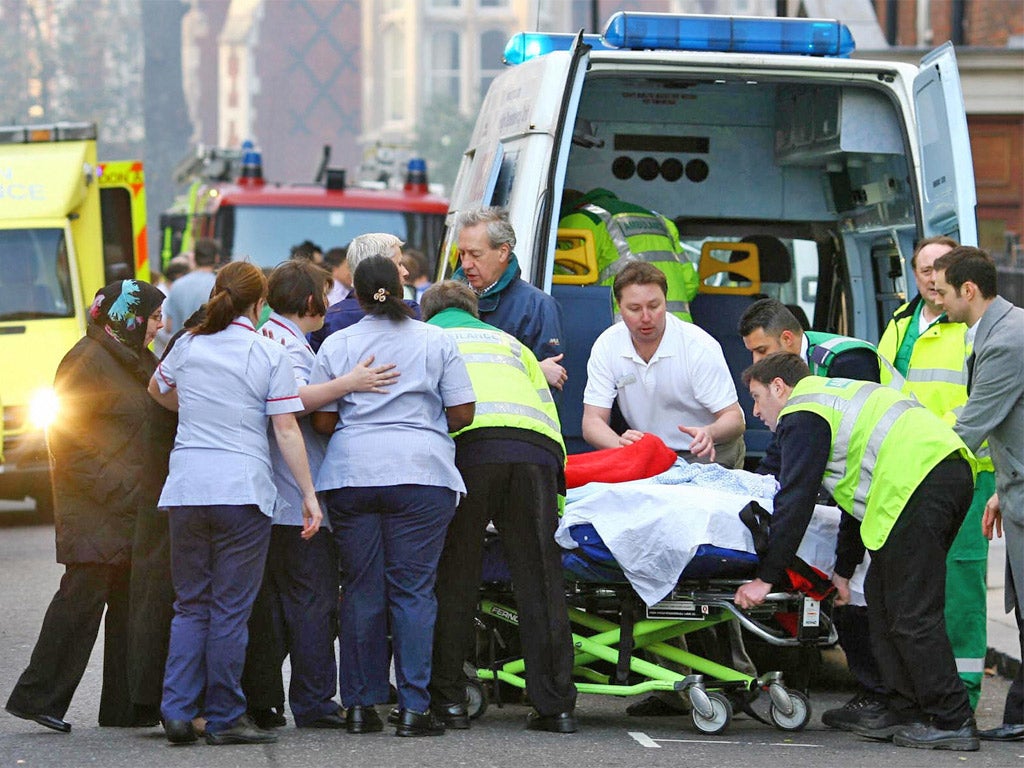As the relative of a patient in A&E, I know how dangerous NHS waiting time targets really are
Strict targets can lead to patients being sent home too soon, or being admitted to hospital when there's no need for them to be there

Your support helps us to tell the story
From reproductive rights to climate change to Big Tech, The Independent is on the ground when the story is developing. Whether it's investigating the financials of Elon Musk's pro-Trump PAC or producing our latest documentary, 'The A Word', which shines a light on the American women fighting for reproductive rights, we know how important it is to parse out the facts from the messaging.
At such a critical moment in US history, we need reporters on the ground. Your donation allows us to keep sending journalists to speak to both sides of the story.
The Independent is trusted by Americans across the entire political spectrum. And unlike many other quality news outlets, we choose not to lock Americans out of our reporting and analysis with paywalls. We believe quality journalism should be available to everyone, paid for by those who can afford it.
Your support makes all the difference.Another day; another bad piece of news about NHS waiting times. This time it's A&E, with new figures showing that just 87.8 per cent of patients were "seen", as the BBC puts it, within four hours compared to a national target of 95 per cent. This figure, for February, is the worst since the target was introduced in 2004.
It just so happens that I spent four hours in major hospital A&E department in February. And what I experienced makes me wonder just how well we understand this target; what it actually means for your mum, dad or any other loved one who ends up in hospital – and whether we should be reassessing how we measure good and bad performance in the NHS.
In my case it wasn’t me who was ill but a close relative. He was taken into A&E by ambulance, transferred immediately into a bed in a cubicle that, apart from the fact it had curtains instead of a door, was the size of decent room.
In came a succession of nurses and doctors. Bloods were taken to be analysed for markers of infection; every 20 minutes or so someone would measure his temperature, oxygen saturation levels and blood pressure. Medical history was taken and cross-referenced again past notes. An ECG was done and a chest X-Ray. Doctors came and went. You have little idea of time.
The care could not be faulted. But what happened next could be.
As we were talking to one of the doctors who was trying to make an assessment of what to do and whether it was in my relative’s best interest to be admitted to hospital (which has risks in itself) or to discharge him to rest at home, a senior nurse came in. “We’re about to breach,” she said rather abruptly. “Are you admitting him?”
The doctor told her that this is what he was attempting to assess. But she would not be put off. “We don’t have the time,” she told him. “I need a decision right now.” The doctor protested again, but it was clear that he was not in charge - the target was calling the shots.
“You carry on assessing him up in the ward but he needs to be out of here now,” she said. And that was it.
So my relative was admitted to hospital because that was the only way the doctor could continue to assess his health. It might only have taken 10 more minutes, and he might have sent him home. Many of the cubicles in A&E were empty at the time: no-one else needed the bed. But the target was king, not the patient.
That is what the four hour A&E wait means. It is not a measurement of how long you’ll wait to see a doctor or a nurse. It’s not a measurement of how long you’ll sit on a hard seat in a waiting room. It is, in the jargon, an assessment of the “percentage of patients spending more than four hours in A&E from arrival to admission, transfer or discharge.”
That is a nonsense – and a nonsense that is not in the best interest of patients.
It can lead to patients being sent home too soon. It can lead to patients being admitted when they don’t need to be. And it can lead to perverse incentives for hospital staff to manage the target and not the human being.
So before we all get outraged about the failure of the NHS to meet A&E wait times we should ask whether that target in itself is a good one. And, in my experience, it is not.
Join our commenting forum
Join thought-provoking conversations, follow other Independent readers and see their replies
Comments